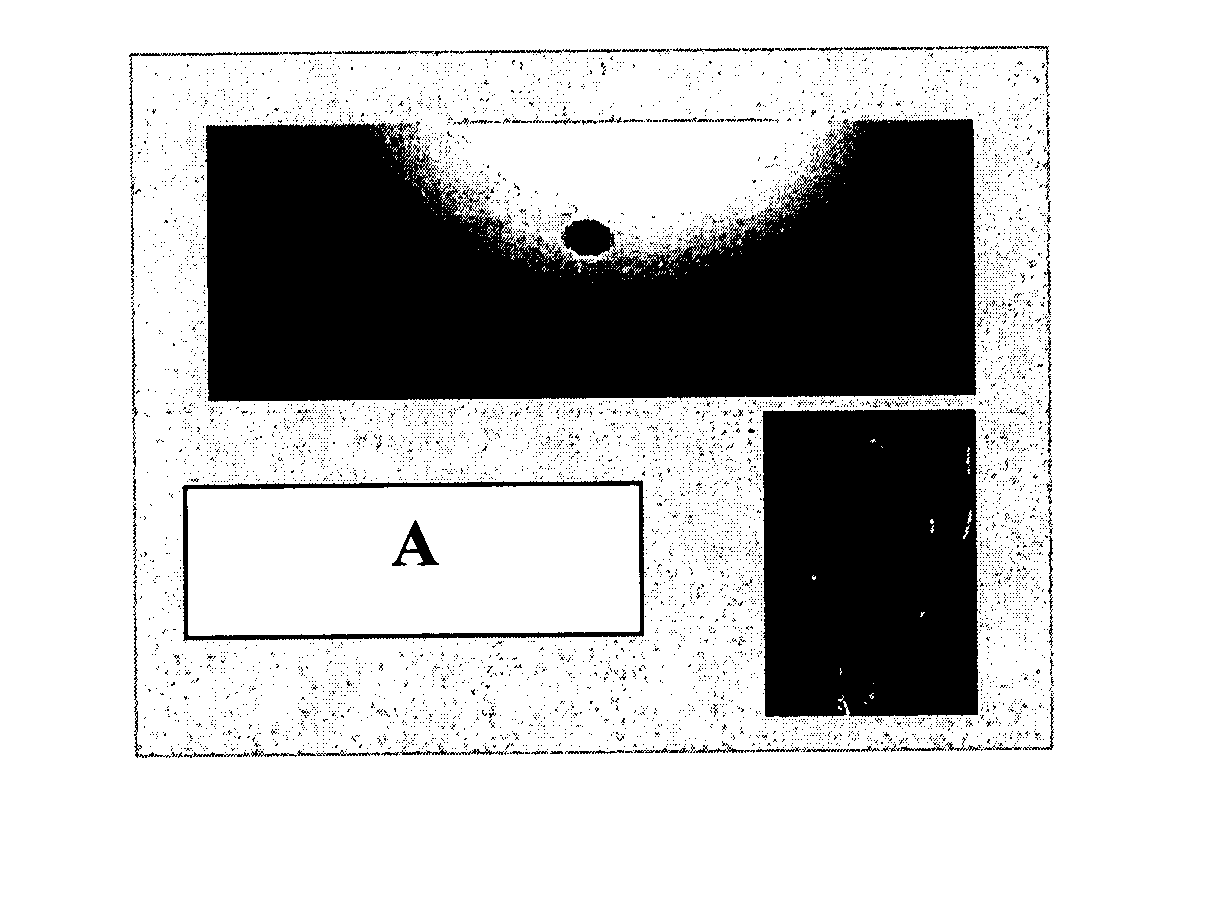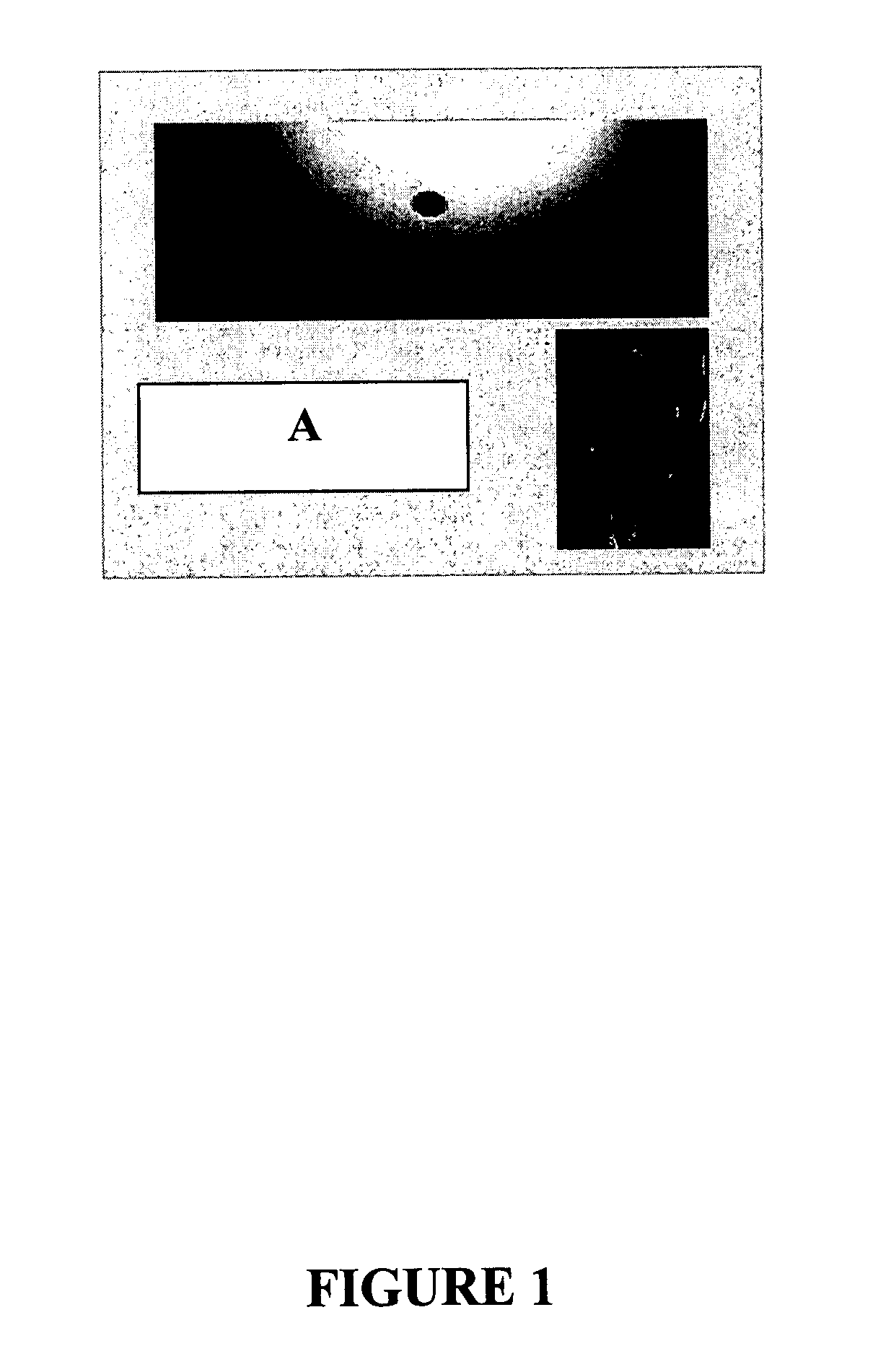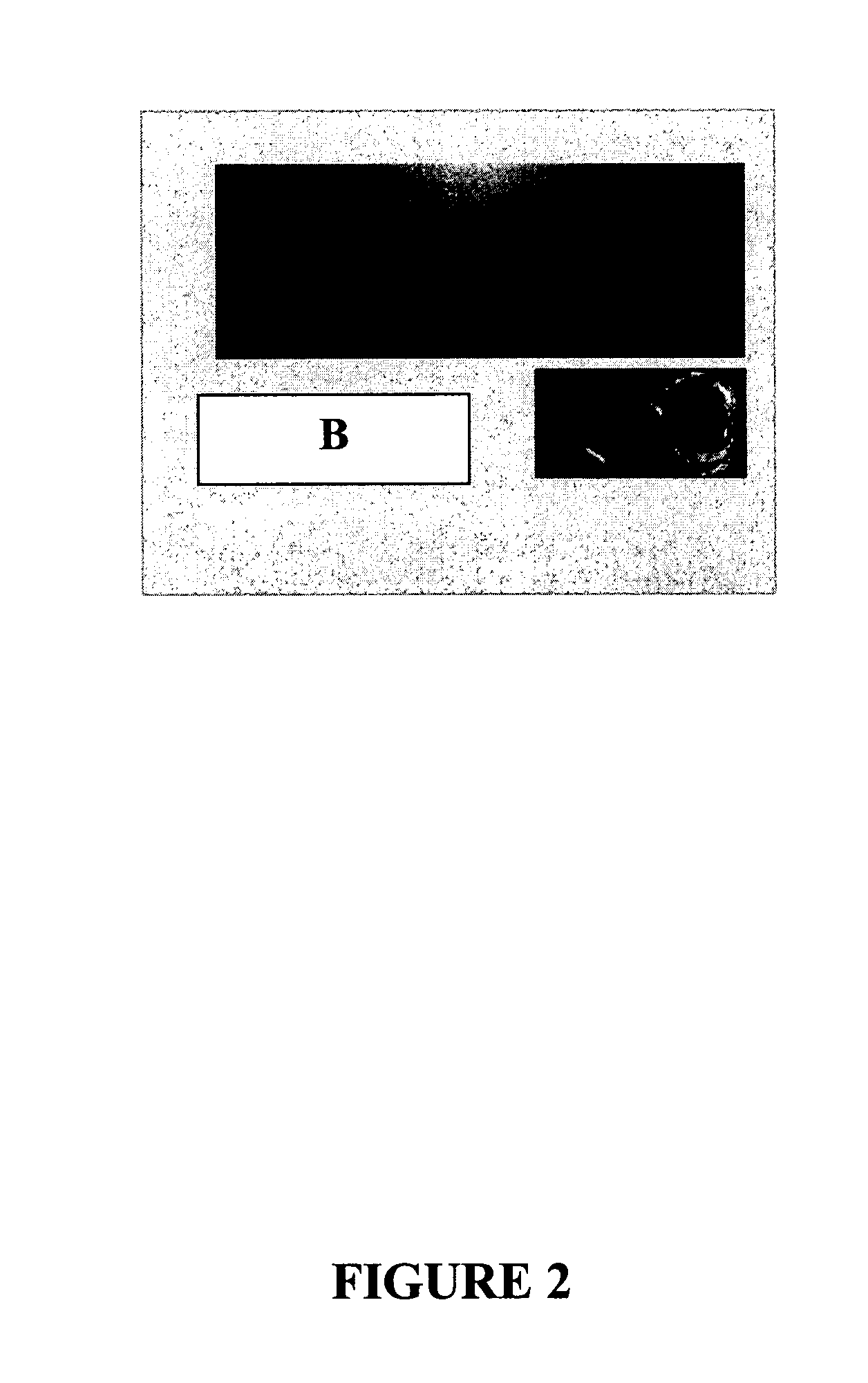Multi-modality marking material and method
a multi-modality, marking technology, applied in the field of multi-modality marking materials and methods, can solve the problems of affecting the detection accuracy of markers, and affecting the safety of patients, so as to enhance the multi-modal imaging characteristics of markers
- Summary
- Abstract
- Description
- Claims
- Application Information
AI Technical Summary
Benefits of technology
Problems solved by technology
Method used
Image
Examples
example
[0075] Markers A-F, each having a major dimension of 3 mm were placed 7 cm apart in a layered gelatin phantom (Knox brand flavorless gelatin, commercially available from Kraft Foods) for analysis. Markers A-C and E were composed of stainless steel alloys, marker D was composed of a titanium alloy, and Marker F was composed of a zirconium oxide substrate formed in a “dog bone” shape and coated with pyrolytic carbon.
[0076] The markers were then analyzed under ultrasound, mammography and MRI imaging modalities. The ultrasound was performed using a GE ultrasound system, mammography was performed using a Siemens system, and the MRI was performed on a Phillips 4T MRI / MRS scanner. The spatial extent of the MRI artifact was measured using a 3D FLASH image (TE / TR—6 / 17 ms, 0.4×1.7 mm resolution). Spectral distortion was measured by comparing linewidth of the water resonance from a 1 ml voxel centered on each marker, to the water linewidth measured in a control voxel containing no marker.
[00...
PUM
 Login to View More
Login to View More Abstract
Description
Claims
Application Information
 Login to View More
Login to View More - R&D
- Intellectual Property
- Life Sciences
- Materials
- Tech Scout
- Unparalleled Data Quality
- Higher Quality Content
- 60% Fewer Hallucinations
Browse by: Latest US Patents, China's latest patents, Technical Efficacy Thesaurus, Application Domain, Technology Topic, Popular Technical Reports.
© 2025 PatSnap. All rights reserved.Legal|Privacy policy|Modern Slavery Act Transparency Statement|Sitemap|About US| Contact US: help@patsnap.com



